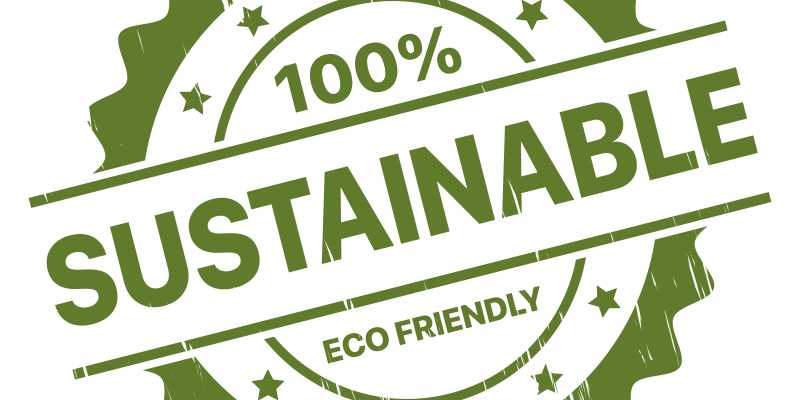The building and construction industry remains one of the largest users of material inputs and among the biggest greenhouse gas emitters on the planet. Accordingly, with the rapid growth in infrastructure and real estate, Green Building Certification in India is a must. Green building is no longer a choice, it has become a mandatory for economic and ecological necessity.
Green building certification provides an important framework to ensure that new and existing structures will reduce their ecological footprint while maximizing buyer’s health and resource efficiency.
What is Green Building Certification?
The role of green certifications is to standardize a real estate system to evaluate, validate, and recognize buildings that are designed, constructed, and operated to be environmentally responsible and resource efficient throughout their lifecycle.
A certified green building is a structure that:
- Uses less water.
- Improves energy efficiency.
- Conserves natural resources.
- Produces less waste.
- Provides healthier spaces for the occupants.
Certification involves independent third-party verification against a set of predefined criteria across multiple parameters, such as site sustainability, water efficiency, energy and atmosphere, materials and resources, and indoor environmental quality.
Why Green Building Certification is Important in India
The reasons that indicated the adoption of Green Building Certification in India :
- The fast-growing population of India, puts extra stress on the resources like water and energy that require much efficiency.
- The real estate sector is one of the significant sources of greenhouse gases. Thus, the direct contribution of green buildings will help to reduce the carbon footprint. Which also contributes to India’s commitment within the SDGs and the Paris Climate Agreement.
- Green buildings support reducing the nation’s dependence on fossil fuels through energy-efficient designs and the integration of on-site renewables like solar power.
- Indoor air quality will be improved with more natural light and ventilation, serving the public health concerns of polluted urban areas.

Major Green Building Standards in India
India’s green building initiative is led by internationally renowned and locally evolved rating systems, each in response to the nation’s specific climatic and building environment.
1. GRIHA
- TERI (The Energy and Resources Institute) established in collaboration with the Ministry of New and Renewable Energy (MNRE), Government of India.
- India’s homegrown design evaluation system, with a focus on climate resistant architecture, resource efficiency, and social-economic measures.
- GRIHA gives star ratings from 1 to 5 based on the percentage of points achieved
2. IGBC
- Established by the Confederation of Indian Industry in 2001.
- A holistic, end-to-end approach that has been specially designed for custom rating programs for different building types, such as Homes, Factories, and Townships.
- Certification will be provided as Silver, Gold, and Platinum. IGBC has been responsible for increasing India’s green building base to billions of square feet.
3. LEED India
- Indian version of the globally acclaimed rating system by the U.S. Green Building Council (USGBC).
- Assesses buildings on sustainability parameters modified to Indian circumstances with an important focus on energy and water savings.
- It will be rated in Silver, Gold, and Platinum.
Other Major Guidelines
- It was introduced by the Bureau of Energy Efficiency (BEE), ECBC is a code that establishes minimum energy performance requirements for the design and construction of commercial buildings.
- BEE’s voluntary program that specifically addresses the energy efficiency in operation of commercial buildings.
Benefits of Green Building Certification
The benefits of certification are three-fold, encompassing benefits to developers, occupants, and the environment.
1. Economic Benefits
Green buildings that are certified usually use 30-50% less water and energy than conventional buildings, resulting in huge savings on utility bills.
Certified projects are more attractive and usually have higher occupancy levels and rental/resale values due to their low operating costs and higher quality.
Central and state governments provide financial and non-financial incentives if there’s Green Building Certification in India which includes the following:
- Tax rebate or subsidy.
- Reduced rates of interest on green mortgages/loans.
- Extra Floor Space Index (FSI).
2. Environmental Benefits
- Energy-efficient technologies and renewable energy substantially decrease the building’s total carbon footprint.
- Use of rainwater harvesting, greywater recycling, and low-flow fixtures can protect 30-50% of water usage.
- The certification process promotes the use of locally available, recyclable, and low-embodied energy materials, reducing waste and resource consumption.
3. Social and Health Benefits
- Increased ventilation, use of non-toxic materials, and optimized natural light result in a healthier and more comfortable living/working environment.
- Research indicates that enhanced IEQ can result in a 10-15% boost to worker productivity and lower absenteeism in commercial environments.
- Certification places developers and corporate occupiers on the right side of environmental responsibility, which boosts brand value.
Future Trends in Green Building in India
The concept Green Building Certification in India and sustainable construction is undergoing a transformation. It’s evolving from basic efficiency towards a focus on holistic sustainability powered by smart technology
1. The Rise of Net-Zero Buildings
The motive of a building that pays its own energy bill is becoming a new reality. This Net-Zero Energy (NZE) goal means the building makes all the power it needs from its own solar panels or wind turbines over a year.
In future, the building will rely less on local municipal services by implementing circular economy strategies for water and waste.
2. Smart and Integrated Technologies
The next wave of the Green Building Certification in India will be based on real-time resource monitoring. Including Artificial Intelligence (AI) and Internet of Things (IoT) sensors will be combined for real-time monitoring and optimization of energy usage, lighting, and HVAC (Heating, Ventilation, and Air Conditioning) according to occupancy and weather.
Next-generation Building Information Modeling and digital integration will optimize the design and certification process, with assurance of performance to design intent.
3. Biophilic and Health-Oriented Design
Nature friendly design, which combines natural components such as light, and views will be crucial to maximize occupant’s well-being, a trend caused by post-pandemic consciousness.
Green certifications such as WELL Building Standard, which are focused on human health within the built environment, will become increasingly prominent in addition to the conventional green certifications.
4. Modular Construction
Increased modular construction methods for speeding up construction time, reducing site waste, and maintaining high-quality assemblies with fewer resources.

The Path Forward
Green building certification in India is no longer an exception, it is emerging as a normal expectation of quality construction. Although the initial investments may be slightly higher, the long-term economic, environmental, and social advantages are assurable. In adopting the strong certification frameworks of GRIHA, IGBC, and LEED, the Indian construction industry is moving towards a resilient and sustainable future for everyone.
Bud Realty, an expert real estate agency in Bangalore. Rapidly adopting industry trends to find your next dream house. Call us now!







Add comment